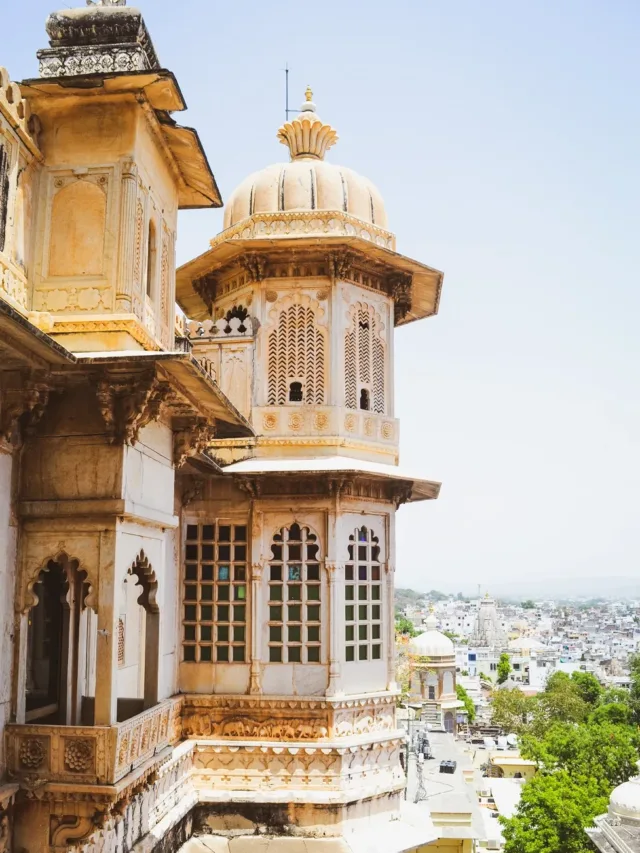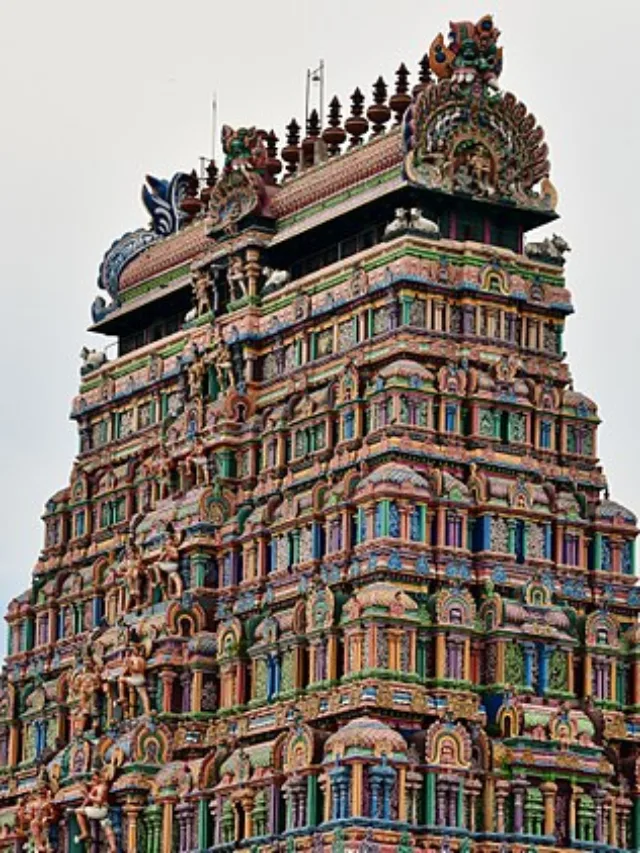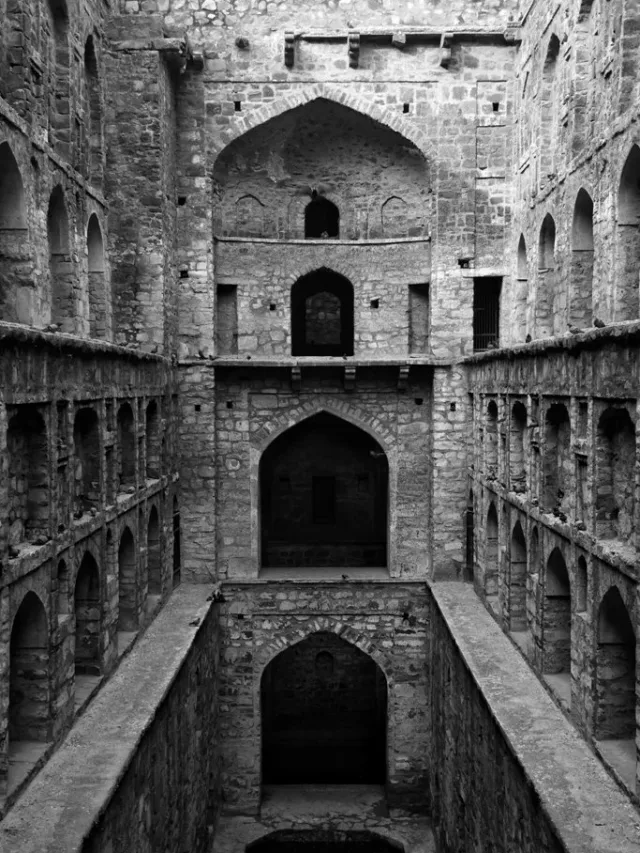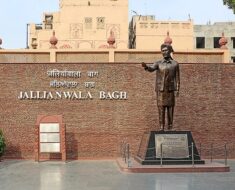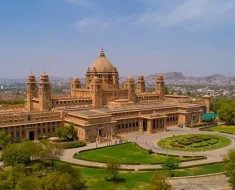India is a land with a rich history and culture, and it is home to numerous historical places that narrate tales of bygone eras. From awe-inspiring architectural marvels to ancient ruins that whisper stories of empires and dynasties, the country is a treasure for history enthusiasts. Here is a list of the 15 must-visit historical places in India
1. Taj Mahal
The Taj Mahal is an absolute symbol of love and affection, an architectural masterpiece, and a wonder of wonders in the world. Nobel Laureate Rabindranath Tagore described it as “The Taj Mahal rises above the banks of the river like a solitary tear suspended on the cheek of time.”
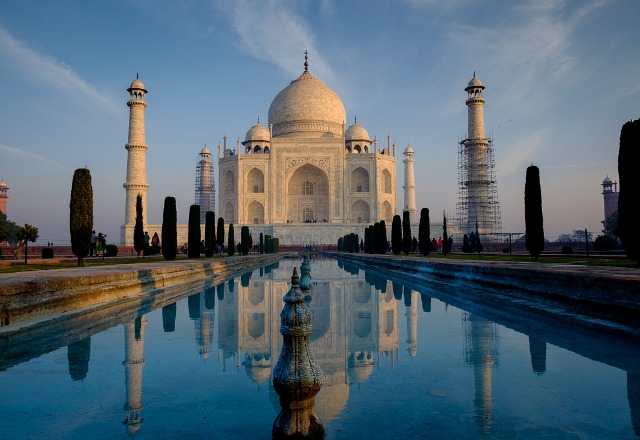
Taj Mahal means Crown of Palaces was built by Mughal emperor Shah Jahan in loving memory of his beloved wife Mumtaz Mahal. Her real name was Arjumand Banu Begum. Shah Jahan gave her the title of Mumtaz Mahal meaning “the chosen one of the palace”
A UNESCO World Heritage Site, it is one of the seven wonders of the world and is a monument of pride for India. The architecture of the Taj Mahal is a blend of Mughal, Persian, Ottoman Turkish, and Indian architectural styles.
Ustad Ahmed Lahauri was the chief architect of the Taj Mahal and the calligraphic work has been credited to Amanat Ali Khan Shirazi. Verses from the Quran were inscribed in calligraphy throughout the complex.
The calligraphy on the entrance gate reads, “O Soul, thou art at rest. Return to the Lord at peace with Him, and He at peace with you.”
Read More: Amazing Facts about the Taj Mahal
2. Red Fort
The Red Fort, also known as Lal Qila is a historic fort and is one of the most significant monuments in India. The majestic fort, made of red sandstone, stands as a testament to the architectural legacy of the Mughals.

It was built by Mughal emperor Shah Jahan as the palace fort of his capital Shahjahanabad present-day Old Delhi. The architecture of the fort is a seamless blend of Islamic, Persian, Timurid and Hindu styles.
The design of Red Fort is credited to architect Ustad Ahmad Lahori, who also constructed the Taj Mahal. The construction of the fort started on 13 May 1638 and it was completed on 6 April 1648. The main entrance of the Red Fort Lahori Gate opened at the ‘Chatta Chowk’, an arched street where silk, jewellery and other items for the imperial household were sold during the Mughal period. The street was also known as Meena Bazaar.
The Red Fort has many important structures like Naubat Khana (drum house), Diwan-i-Aam – the Public Audience Hall, Diwan-i-Khas also known as the Shah Mahal, Mumtaz Mahal, Rang Mahal, hammam – the royal bath, Moti Masjid.
It is a monument of national significance, every year on Independence Day, the Prime Minister of India hoists the National Flag from the fort’s ramparts. It is one of the most visited historical places in India and a popular tourist destination.
Read More: Top 10 Most Visited Monuments in India
3. Qutub Minar
The iconic Qutub Minar, the tallest brick minaret in the world is located in the Mehrauli area of Delhi. It is one of the most spectacular structures from the medieval era in the Indian capital.
A UNESCO World Heritage site, it is the tallest brick minaret in the world. Built as a victory tower in 1192 AD by Qutb-ud-din Aibak, it is the finest example of Indo-Islamic architecture and was inspired by the Minaret of Jam in Afghanistan.

The construction of the Qutub Minar was started in 1199 by Qutub-ud-din Aibak, who laid the foundation of the Mamluk dynasty (1206-1290) in India. Qutub-ud-din-Aibak did not live long enough to witness its completion. The tower was finally completed by his successors Iltutmish and Firoz Shah Tughlaq.
There are many inscriptions in Parso-Arabic and Nagari characters in different sections of the Qutub Minar. These inscriptions reveal the history of its construction and the later restorations and repairs by Firoz Shah Tughluq (1351–89) and Sikandar Lodi (1489–1517).
The Qutub Complex has many other important monuments and buildings apart from Qutub Minar such as the Iron Pillar, the Alai Darwaza, Quwwat-ul-Islam Mosque, the tombs of Iltutmish, Ala-ud-din Khalji and Imam Zamin; the Alai Minar etc
Many successive rulers, including the Tughlaqs, Alauddin Khalji and the British added structures to the Qutab complex.
Read More: Qutub Minar – Tallest Brick Minar in the World
4. India Gate
India Gate is one of the most important and celebrated historical places in India. It is a war memorial located on the Rajpath in New Delhi. It has become a major tourist attraction in Delhi and millions of local and foreign tourists visit India Gate every year.
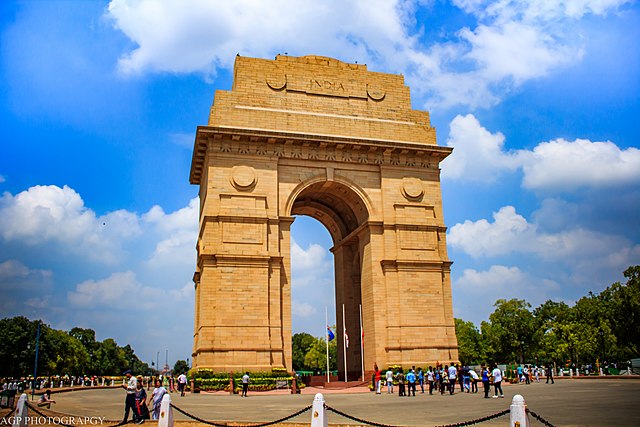
It is one of the biggest war memorials in the world and was built to pay tribute to the soldiers of the Undivided Indian Army who were martyred during World War I.
It is dedicated to the honour of 70,000 soldiers who fought and were martyred between 1914 and 1921 in France, Flanders, Mesopotamia, Persia, East Africa, Gallipoli, and the Second Anglo-Afghan War.
India Gate complex has Amar Jawan Jyoti or the flame of the immortal soldier. It was built after the Indo-Pakistan War of 1971 to commemorate the martyred and unknown soldiers of the Indian Armed Forces who died during the war.
On 25 February 2019, the Government of India built the National War Memorial near the India Gate to pay tribute to the Indian Armed Forces.
Read More: Interesting Facts about India Gate
5. Ajanta and Ellora Caves
The Ajanta and Ellora Caves are among the largest rock-cut Hindu, Buddhist, and Jain temple cave complexes in the world with inscriptions dating back to the 6th century.
The two monumental rock-cut caves are located in the Sahyadri range of hills in Aurangabad, Maharashtra and are the epitome of art and architecture. Both these rock-cut cave sites are separated by a distance of approximately 100 km.
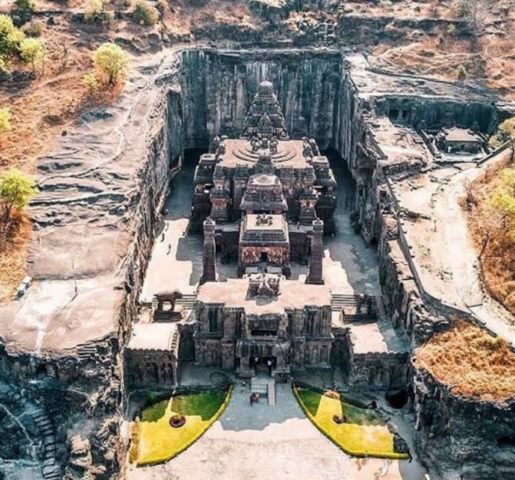
A UNESCO World Heritage Site, rock-cut cave sites attract tourists from all over the world and are one of the most visited historical places in India.
The Ajanta Caves are a series of 29 rock-cut Buddhist cave monuments on the Waghora River. These caves include paintings and rock-cut sculptures described as among the finest surviving examples of ancient Indian art and were built in two phases, the first starting around the second century BC and the second occurring from 400 to 650 AD.
The Ajanta Caves constitute ancient monasteries Viharas and worship halls Chaityas of different Buddhist traditions.
The Ellora Caves are a multi-religious rock-cut cave complex with inscriptions dating from the period 6th century AD onwards. There are over 100 caves at the site out of which 34 are open to the public. These consist of 17 Hindu, 12 Buddhist and 5 Jain caves built close to one another and illustrate the religious harmony that existed in ancient India.
Read More: Statue of Unity – Tallest Statue in the World
6. Khajuraho Temples
The Khajuraho Group of Monuments, located in Chhatarpur, Madhya Pradesh, is a collection of Hindu and Jain temples built during the Chandella dynasty. The heritage town of Khajuraho is a UNESCO World Heritage Site and stands among the greatest masterpieces of Indian art and craftsmanship.

The temples are famous for their incredible intricate sculptures depicting different aspects of life like spirituality, love, art and royalty. These temples were built between 885 and 1000 CE and by the 12th century, the site had 85 temples, but only about 25 remain today
Based on their geographical location, the temples are categorised into three groups: Eastern, Western and Southern. Among these temples, six are dedicated to Lord Shiva as the main idol, eight to Lord Vishnu, one each to Lord Ganesha and the Sun God, and three to Jain Tirthankaras (saints).
The Kandariya Mahadeva Temple, dedicated to Lord Shiva is the largest temple among all temples in Khajuraho. The four Jain temples—Adinath, Shantinath, Parsvanath, and Ghantai—lie among the Eastern group of temples.
Read More:
7. Hampi
Hampi, once the last capital of the magnificent Vijayanagar Empire is dotted with numerous ruined temple complexes, which offer a glimpse into India’s rich history and architecture.

As a UNESCO World Heritage Site situated on the banks of the mighty Tungabhadra River, the ruins of the incredible structures in Hampi stand as a testament to its rich past during the powerful Vijayanagara empire’s reign between 1336 and 1646 AD.
Hampi’s ruins are spread over 4,100 hectares and there are more than 1,600 surviving remains of the last great Hindu kingdom in South India. These ruins include temples, forts, royal and sacred complexes, pillared halls, shrines, mandapas, water structures etc.
It is mentioned in the Ramayana and the Puranas of Hinduism as Pampa Devi Tirtha Kshetra
Read More: Top 12 UNESCO World Heritage Sites in India
8. Mahabalipuram
Mahabalipuram also known as Mamallapuram lies on the Coromandel Coast of the Bay of Bengal and was an ancient seaport town. It was built in the 7th century during the Pallava dynasty by the Pallava king Narasimhavarman I.

The town is known for its medieval Hindu temples and monuments and is a UNESCO World Heritage Site. The Group of Monuments at Mahabalipuram is a collection of 7th- and 8th-century CE religious structures.
The site has 40 ancient monuments and Hindu temples, including one of the largest open-air rock reliefs in the world: the Descent of the Ganges or Arjuna’s Penance. The chariot-shaped Panch Rathas Temples of Dharmaraja Ratha, Arjuna Ratha, Bhima Ratha, Draupadi Ratha, Nakula Sahadeva Ratha, and also Ganesha Ratha.
Mantapas or Cave temples like Mahishasurmardini Cave Temple, Krishna Cave Temple, Panchpandava Cave Temple and Varah Cave Temple and famous structural temples like the Shore Temple and Olakkanesvara Temple.
Mahabalipuram stands as a living testament to the artistic and architectural excellence of ancient India, attracting visitors from all over the world to marvel at its timeless beauty and cultural heritage.
9. Jallianwala Bagh
Jallianwala Bagh is a historic garden and memorial in Amritsar preserved in the memory of those wounded and killed in the Jallianwala Bagh Massacre that took place on the site on the festival of Baisakhi Day, 13 April 1919 and resulted in the death of over 1,000 people and another 1,500 people injured in the firing.
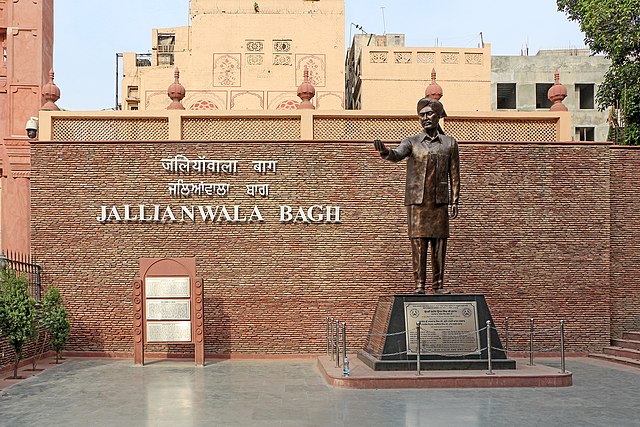
The 7-acre site houses a museum, gallery and several memorial structures. The Indian National Congress built a memorial for the innocent souls who departed on this unfortunate day and it was inaugurated by Rajendra Prasad in 1961.
It is managed by the Jallianwala Bagh National Memorial Trust and was renovated between 2019 and 2021 and one of the most visited historical places in India.
The Jallianwala Bagh Massacre is one of the most murderous and remorseless incidents in the history of mankind. It was a cold-blooded genocide that shook the entire nation and the massacre acted as a catalyst in shaping the Indian Independence movement.
The ground stands to witness the inhuman savagery and wickedness of the British Empire. Britain never formally apologized for the massacre but expressed “regret”.
Read More: Jallianwala Bagh Massacre – A Murderous Incident in the History of Mankind
10. Humayun’s Tomb
Humayun’s Tomb is no less than an architectural splendour and it was one of the first and finest garden mausoleums in India. Also referred to as Maqbara e Humayun, it is also a UNESCO World Heritage site.

The tomb was commissioned by Humayun’s first wife Empress Bega Begum in 1558 and was designed by Persian architect Mirak Mirza Ghiyas. The main structure is made of red sandstone while the tomb is made of white and black marble.
The complex also has tombs of Empress Bega Begum, Dara Shikoh great-great-grandson of Humayun and as well as numerous other subsequent Mughals.
The monument was used by the last Mughal emperor Bahadur Shah Zafar as a refuge before being exiled to Rangoon by the Britishers in 1857.
Read More: 10 Most Famous Historic Forts in India
11. Fatehpur Sikri
Fatehpur Sikri was a city established by the Mughal Emperor Akbar in 1571 and served as the capital of the Mughal Empire for a brief period between 1572 and 1585 AD. The city is situated at a distance of 37 km from Agra and was constructed using red sandstone.
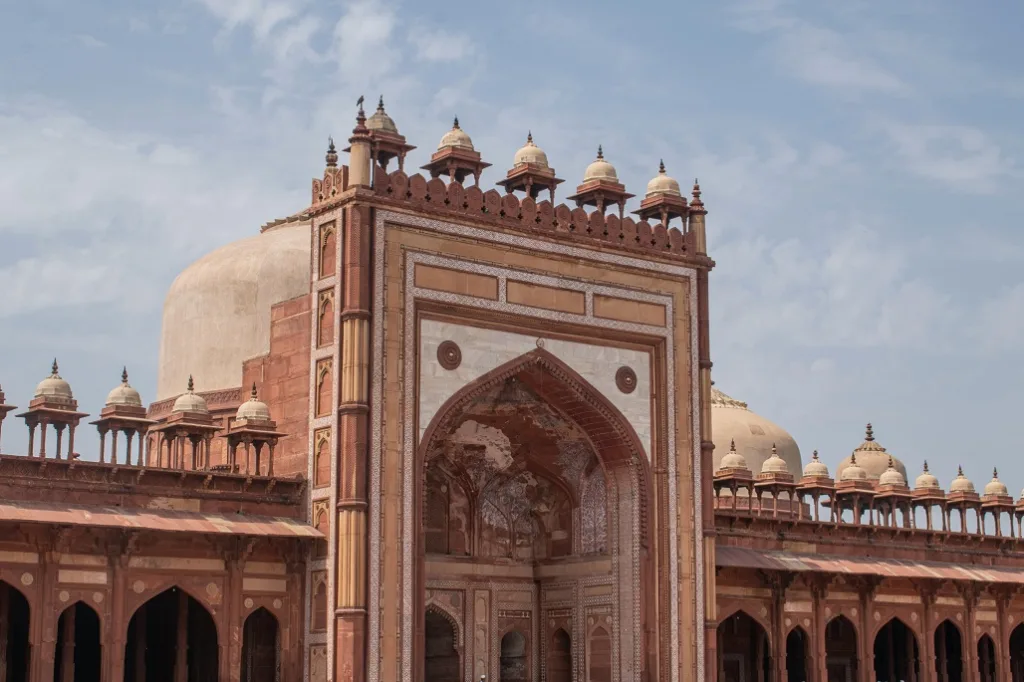
It is said that the emperor, who wished for a son, went to Sikri to get blessed by Sufi saint, Sheikh Salim Chishti. He was soon blessed with a son and was prompted to establish his capital here, building a beautiful mosque and three palaces, one each for his three favourite wives.
Emperor Akbar went to Sikri to seek blessings from Sufi saint, Sheikh Salim Chishti and soon he was blessed with a son with his favourite wife Mariam-uz-Zamani in 1569. He was prompted to establish his capital here and began construction of a religious compound to commemorate the Sheikh who had predicted the birth
The city came to be known as Fatehpur Sikri, the “City of Victory” and he also named his son Salim, after the saint who had blessed him
Fatehpur Sikri a UNESCO World Heritage site is known for its grand structures, like Buland Darwaza, Jama Masjid, Diwan-i-Aam, Diwan-i-Khas, Tomb of Salim Chishti, Palace of Jodha Bai, Hawa Mahal and Nagina Masjid which are a charismatic blend of Islamic and Hindu elements in their architecture style and design.
12. Hawa Mahal
Hawa Mahal literally means the “Palace of the Winds”. The iconic palace is considered one of the most popular tourist attractions of Jaipur city.

It was built by Maharaja Sawai Pratap Singh in 1799 for the ladies of the royal family to witness the grandeur of the city from the Jharokhas without being seen themselves. The palace has 953 windows, which are called ‘Jharokhas’
The Hawa Mahal is a five-storey building, and it is the tallest building in the world that has been built without a foundation and was designed by Lal Chand Ustad.
Maharaja Sawai Pratap Singh, a devotee of Lord Krishna, dedicated the palace to him. It is said that the shape of the building resembles the crown of Krishna.
The Hawa Mahal is a specimen of architectural marvel that reflects a harmonious blend of the Hindu Rajput and Islamic Mughal architectural styles and is one of the most visited historical places in India.
13. Konark Sun Temple
Konark Sun Temple is a 13th-century Sun Temple at Konark located on the eastern shores of the Indian subcontinent. It is about 35 kilometres northeast of Puri on the coastline of Odisha, India. The temple is a masterpiece of creative genius and is one of the outstanding examples of architecture, art, and craftsmanship and is one of the famous historical places in India.

The Nobel Laureate Rabindranath Tagore wrote about Konark, “Here the language of stone surpasses the language of human.”
An architectural marvel and Odisha’s only UNESCO World Heritage Site known for its intricate stone carvings. The temple was built by Narasimha Deva I ruler of the eastern Ganga dynasty in the middle of the 13th century.
To build this architectural marvel, artistic and engineering magnificence 1200 artisans worked for 12 years (1243-1255 A.D.). The Sun Temple is considered a chariot for the Sun God, Surya, and was designed in the form of a massive decorated chariot mounted on 24 wheels and drawn by seven mighty horses.
Read More: 22 Incredible Ancient Temples In India
14. Sanchi Stupa
The Great Stupa at Sanchi is one of the most important Buddhist monuments located at Sanchi Town, Madhya Pradesh. The Sanchi Stupa is the oldest stone structure in India that was built during the Mauryan period.
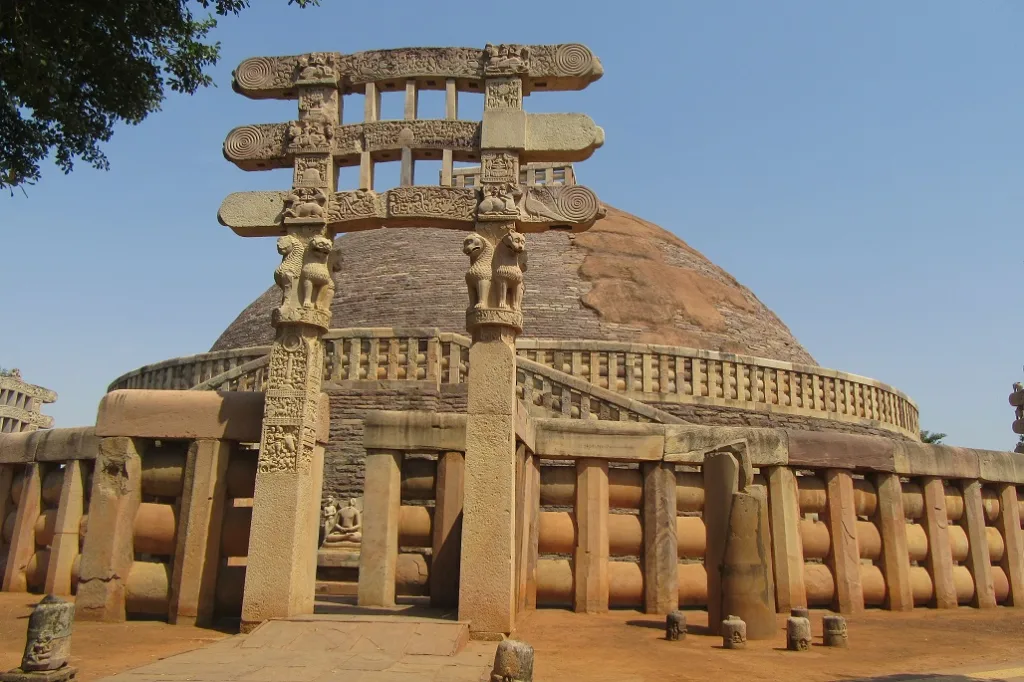
This famous historical place in India was originally commissioned by the Mauryan emperor Ashoka the Great in the 3rd century BCE. The stupa is known for its Buddhist style of architecture and four decorated gateways that depict the life of Buddha.
The Great Stupa has a hemispherical dome which is the main highlight of this site. This is also known as Anda. There is a base on which the main dome is rested, and there is a relic chamber.
The stupa is surrounded by a path for circumambulation, providing pilgrims and visitors the opportunity for meditative walks. The path symbolizes the continuous cycle of birth, death, and rebirth.
Read More: Top 10 Ancient Sun Temples in India
15. Victoria Memorial
Victoria Memorial is a grand British-era white marble monument and museum, built in memory of Queen Victoria of England. It was constructed between 1906 and 1921 by the then Prince of Wales and is the largest monument to a monarch anywhere in the world.

The memorial is a stunning example of the fusion of British and Mughal architectural styles. It was designed by Sir William Emerson of the British Institute of Architects and the construction was done by Martin & Co., Calcutta.
The Victoria Memorial is surrounded by beautifully maintained gardens spread across 64 acres and there are sculptures of Queen Victoria sitting on the throne, King Edward VII, and other English Governor Generals.
The memorial has been turned into a museum that has 25 galleries that exhibit historical paintings, sculptures, manuscripts, rare photographs, weapons, and other artefacts.
The iconic Victoria Memorial is a testimony of Kolkata’s rich history and cultural heritage and is one of the most important historical places in India.

